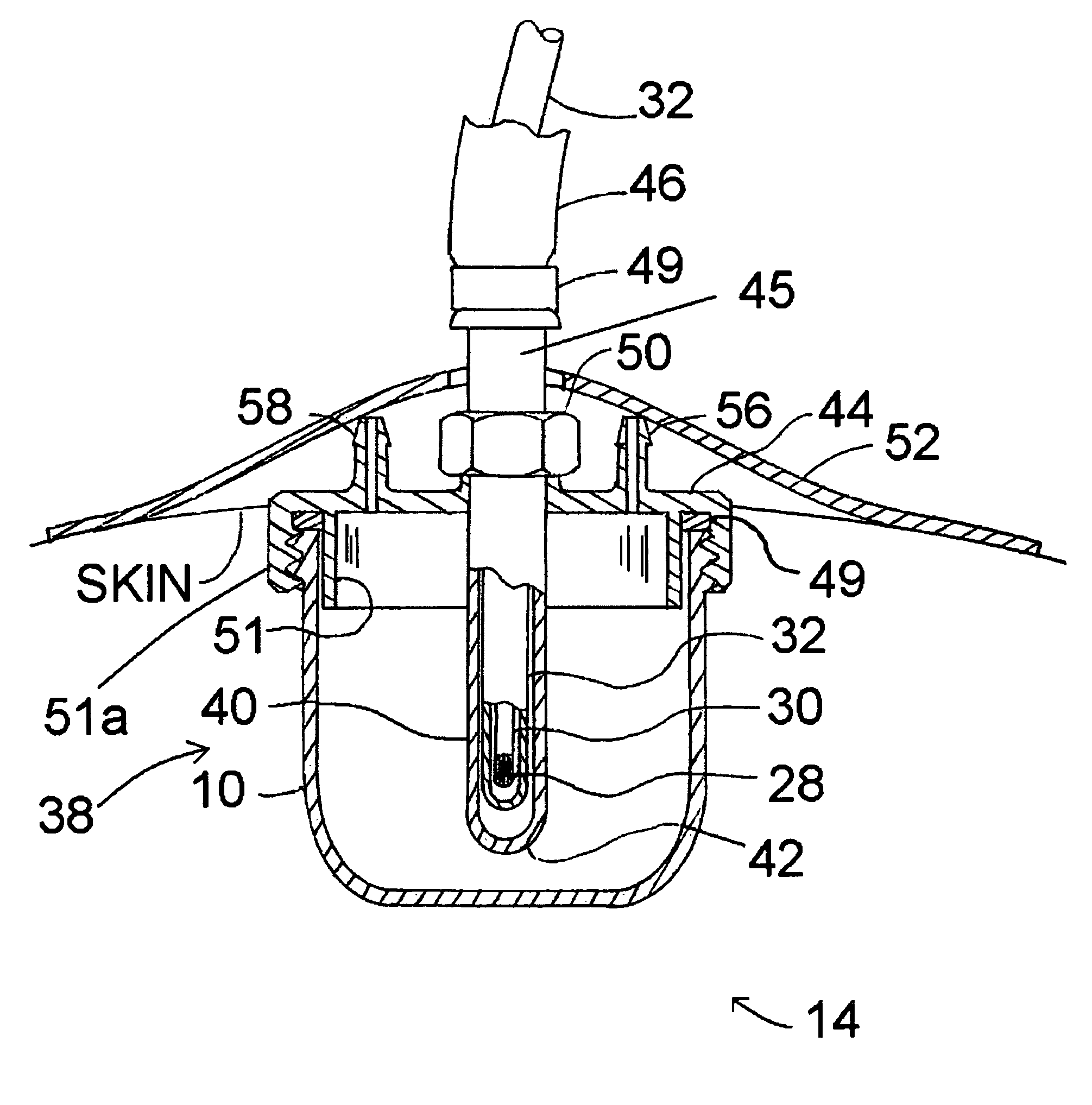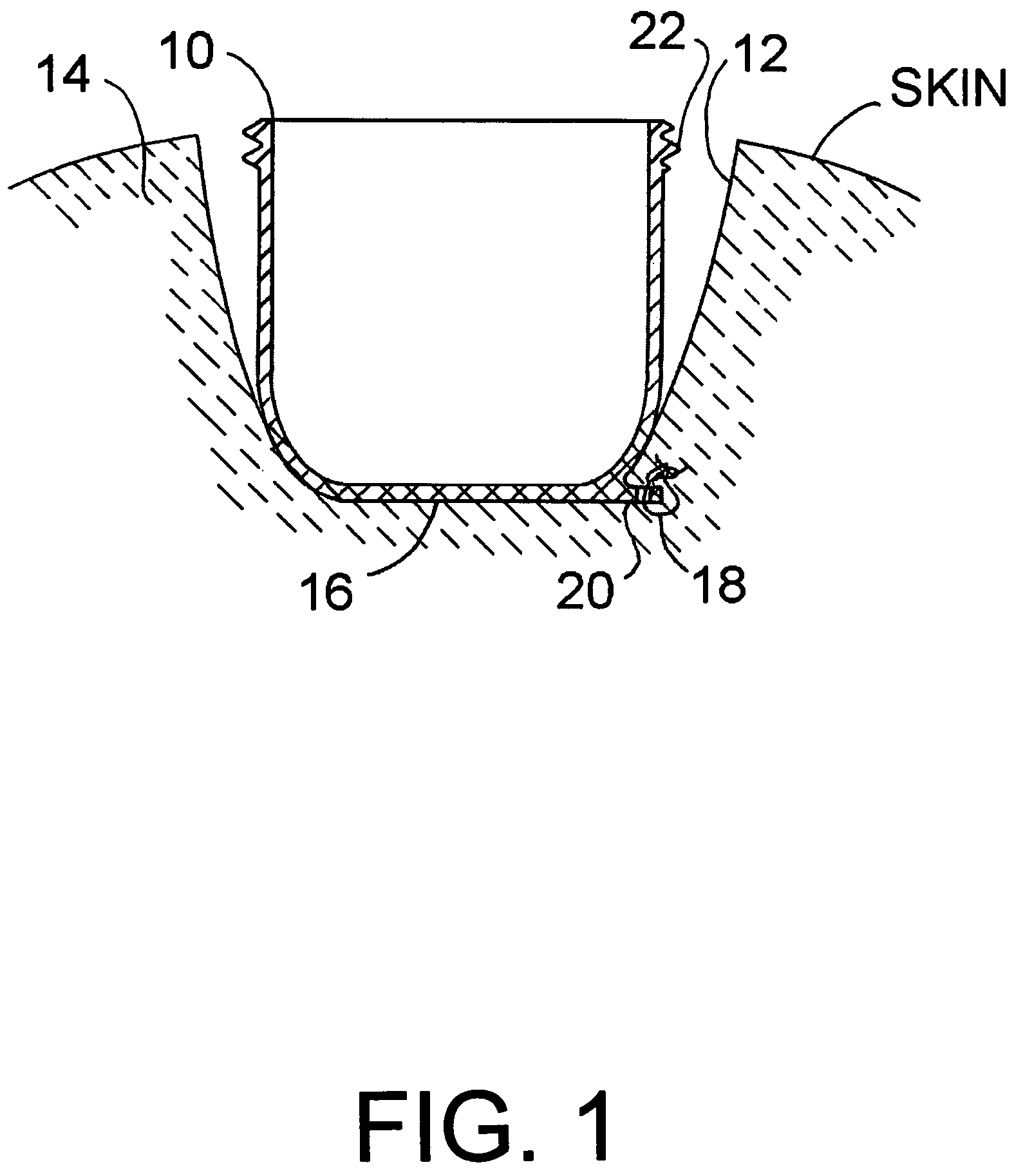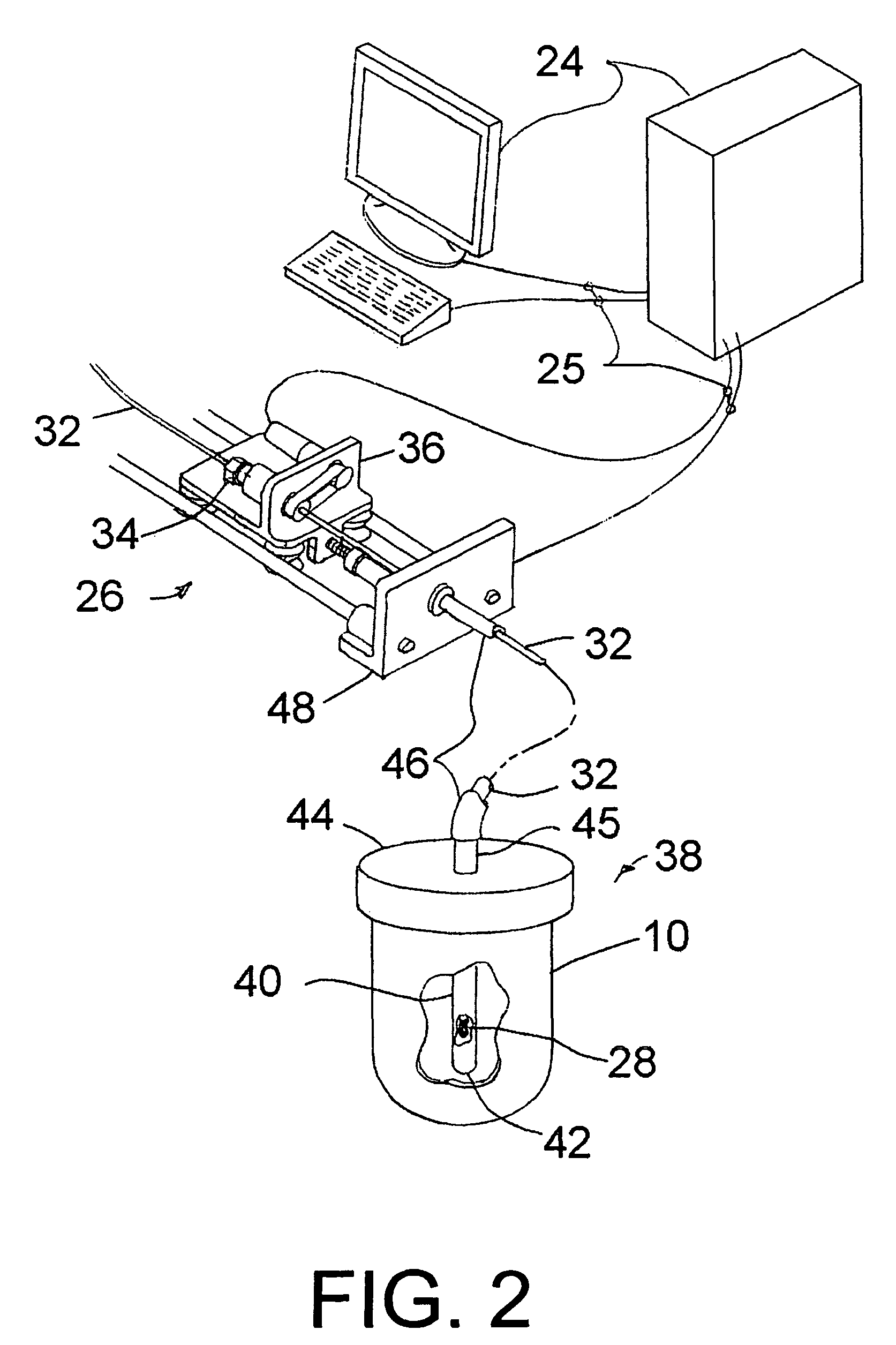Applicators and methods for intraoperative treatment of proliferative diseases of the breast
a breast cancer and proliferative disease technology, applied in the field of radiation therapy of proliferative disease, can solve the problems of no applicator, analogous to the balloon applicator, used in special, heavily shielded rooms, and reduce the likelihood of normal tissue being exposed to harmful radiation levels
- Summary
- Abstract
- Description
- Claims
- Application Information
AI Technical Summary
Benefits of technology
Problems solved by technology
Method used
Image
Examples
Embodiment Construction
[0022]FIG. 1 shows in section view, a preferred brachytherapy applicator cup 10 positioned in an open surgical cavity 12 left in the breast 14 of a patient following (at least partial) tumor resection. The cup preferably is substantially rigid, of a predetermined shape (in this example circular), and preferably substantially transparent to x-rays and to visible light, or at least partially transparent to x-rays. It may, for example, be molded from engineering plastic, preferably with a specific gravity near unity to simplify treatment planning. Suitable materials would include polycarbonate, polyphenolene ether (Noryl, from GE Plastics, is an example) and polyethersulfone (Radel, from Solvay Advanced Polymers is another example). The shape can be generally circular-cylindrical, or other shapes.
[0023]If the tissues at the bottom of the cavity are susceptible to radiation damage and are to be protected, the material of the bottom portion 16 of the cup may further comprise the addition...
PUM
 Login to View More
Login to View More Abstract
Description
Claims
Application Information
 Login to View More
Login to View More - R&D
- Intellectual Property
- Life Sciences
- Materials
- Tech Scout
- Unparalleled Data Quality
- Higher Quality Content
- 60% Fewer Hallucinations
Browse by: Latest US Patents, China's latest patents, Technical Efficacy Thesaurus, Application Domain, Technology Topic, Popular Technical Reports.
© 2025 PatSnap. All rights reserved.Legal|Privacy policy|Modern Slavery Act Transparency Statement|Sitemap|About US| Contact US: help@patsnap.com



